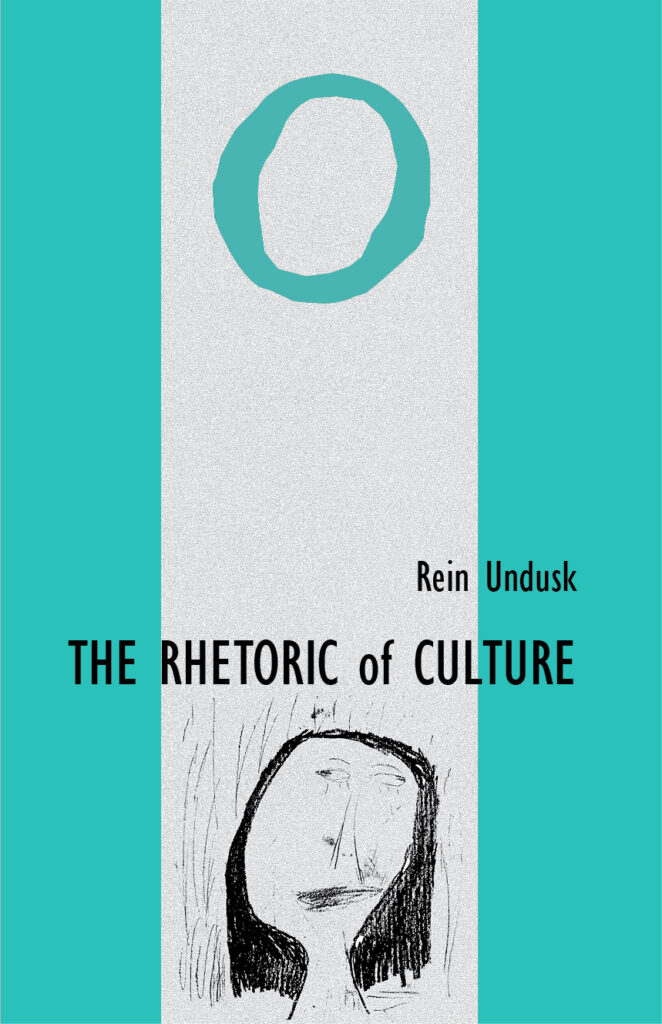The Rhetoric of Culture
oxymora 7
The Case of Infinity

- Autor
- Rein Undusk
- Keeletoimetaja
- Kersti L. Linask
- Kujundaja
- Tiiu Pirsko
- Kaanekujundus
- Mari Nõmtak
- Kirjastus
- Underi ja Tuglase Kirjanduskeskus
- Ilmumisaasta
- 2022
- Lehekülgi
- 312
Underi ja Tuglase Kirjanduskeskuse sarja oxymora seitsmes köide on Rein Unduski monograafia „The Rhetoric of Culture. The Case of Infinity“ („Kultuuriretoorika. Lõpmatuse juhtum“).
Köide võtab vaatluse alla mõistelise dünaamika kultuuris. Tulles välja provisoorse väitega, et kultuur on jagatav laias laastus kolmeks žanriks – esteetikaks, ratsionaalsuseks ja teoloogiaks – , püüab raamat kirjeldada lõpmatuse mõiste ajaloolise retseptsiooni najal (antiigist prantsuse klassitsismini) seda žanridevahelist mõistete kujunemis- ja muutumisprotsessi.
Retsensioon: Märt Väljataga. Kahe lõpmatuse vahel. Keel ja Kirjandus, 4 (2023), 442-444.
Tutvustus inglise keeles
The rhetoric of culture claims that culture makes sense as a trip from aesthetics to rationality to theology. The three legs, obtained through cross sectioning of the route that is conic in its form, determine the three separately homogenous spaces of culture. The question posing to the itinerant is how to traverse the enforced cutting between the sections (on the way from aesthetics to rationality and onward) without losing one’s memory and the merits once gained. How to achieve the personality of knowledge as a scientist? How to integrate rationality with the vectors from the aesthetical and theological sides? What to do with volition that is disposed to act without antecedents, that is, incidentally? The thesis of the present book is that the integrative approach to culture is achievable out of rhetorical stance on it and can be explicated on the basis of distribution of infinity in culture.
Sisukord / Contents
INTRODUCTION
I THE RHETORIC OF CULTURE: A POSTULATION OF CONCEPTUALITY EXPOSED
II FROM ANTIQUITY TO CHRISTIANITY: THE AMELIORATION OF INFINITY
1. The Platonic–Aristotelian concept of infinity
2. The beginnings of positive infinity in the Greco-Roman world
3. The conceptual fusions underlying the new look at infinity
4. Conclusion
III FAITH AND REASON: CHARTING THE MEDIEVAL CONCEPT OF THE INFINITE
1. St. Augustine
2. Pseudo-Dionysius and John Scottus Eriugena
3. St. Thomas Aquinas
4. John Duns Scotus, William of Ockham
5. Conclusion
IV THE PREPARATION FOR THE RENAISSANCE: DIETRICH OF FREIBERG, MEISTER ECKHART, NICHOLAS OF CUSA
1. Albert the Great, Dietrich of Freiberg
2. Meister Eckhart
3. Nicholas of Cusa
4. Conclusion
V THE QUESTION OF LINE AND COLOR IN THE MODERN AGE: THE RENAISSANCE
1. Disegno
2. Colore
3. Perspective
4. Conclusion
VI FRENCH CLASSICISM: THE INFINITY DODGED
1. The submarines of classical episteme
2. The idea of clarity: the philosophical background
3. Jesuits and Jansenists
4. Conclusion
EPILOGUE
LITERATURE
INDEX
PUBLICATION DATA
